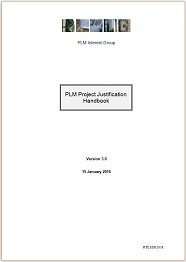|
PLM Interest Group |
|||||||||||||||||||||||||||||||||||||||||||||||||
|
|
|
|
|||||||||||||||||||||||||||||||||||||||||||||||
|
|
|
|||||||||||||||||||||||||||||||||||||||||||||||
|
|
|
|
|||||||||||||||||||||||||||||||||||||||||||||||
|
PLM Justification Handbook
Metrics and KPIs You may be able to quantify exactly how much it is costing your company to implement PLM, but can you demonstrate the real financial benefits that it provides? The PLM Team can now prove to everybody, with clear, quantified metrics, that the PLM implementation is of real benefit to the company. The PLMIG Project Justification Methodology enables you to put a clear financial value on the net improvement that PLM is making to your business. This is exactly what you need for your new project proposals - a set of quantified financial benefits that make a watertight case for approval. The Handbook The PLM Justification Handbook contains a standard, neutral methodology to quantify the costs, benefits and commercial value of implementing PLM.
The PLM Justification Handbook enables the PLM Team to produce properly costed proposals for new PLM projects, that can be assessed for demonstrable success after they have been implemented. See the Handbook Table of Contents >>> Background The Handbook was developed from an international series of workshops as part of the PLM Financial Framework initiative. Need for Metrics The methodology takes as its starting point the need to produce quantified PLM benefits, because:-
Methodology The methodology is structured around four Stages:-
Document Templates The driver for progress through the Stages is that a set of specific documents must be produced that will help achieve this understanding and approval:-
Template documents for the first three of the above are provided as part of the toolset. Instruction Documents Also provided are the following PLMIG instruction documents:-
Details The full PLM Justification toolset can be purchased directly from the Store. Alternatively, the Toolset is part of the full set of PLMIG material provided by PLMIG Membership. All documents are supplied in Word format so that users are able to modify and adapt them as desired, as specified in the Terms and Conditions. You can request more information about the Handbook, or about any other aspect of the initiative, via justification@plmig.com. © Copyright 2025 PLM Interest Group |
||||||||||||||||||||||||||||||||||||||||||||||||
| <<< Return Home | |||||||||||||||||||||||||||||||||||||||||||||||||
|
|
|
|
|||||||||||||||||||||||||||||||||||||||||||||||





